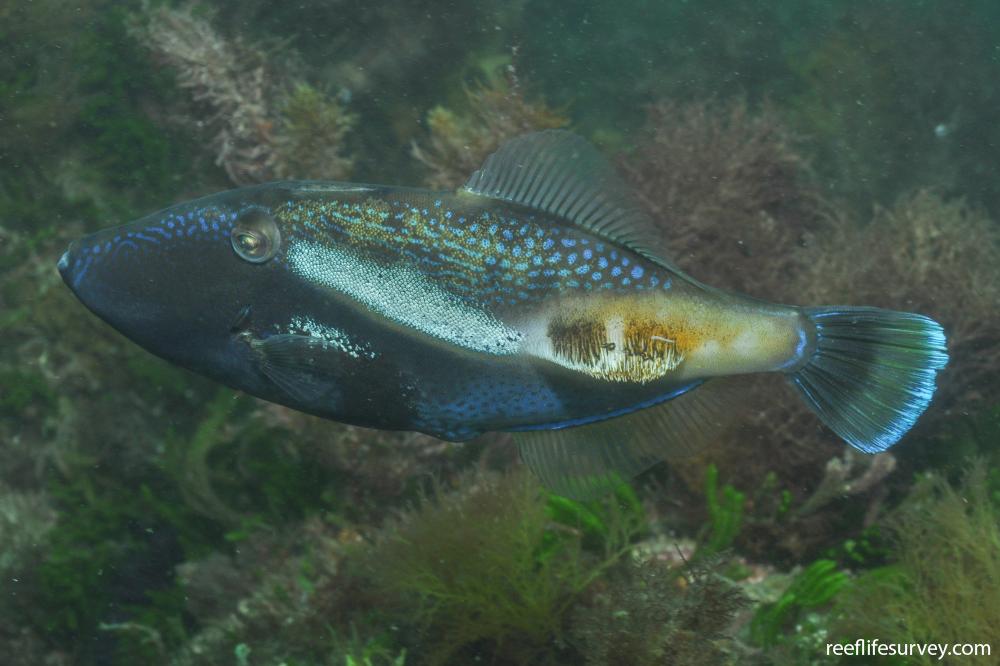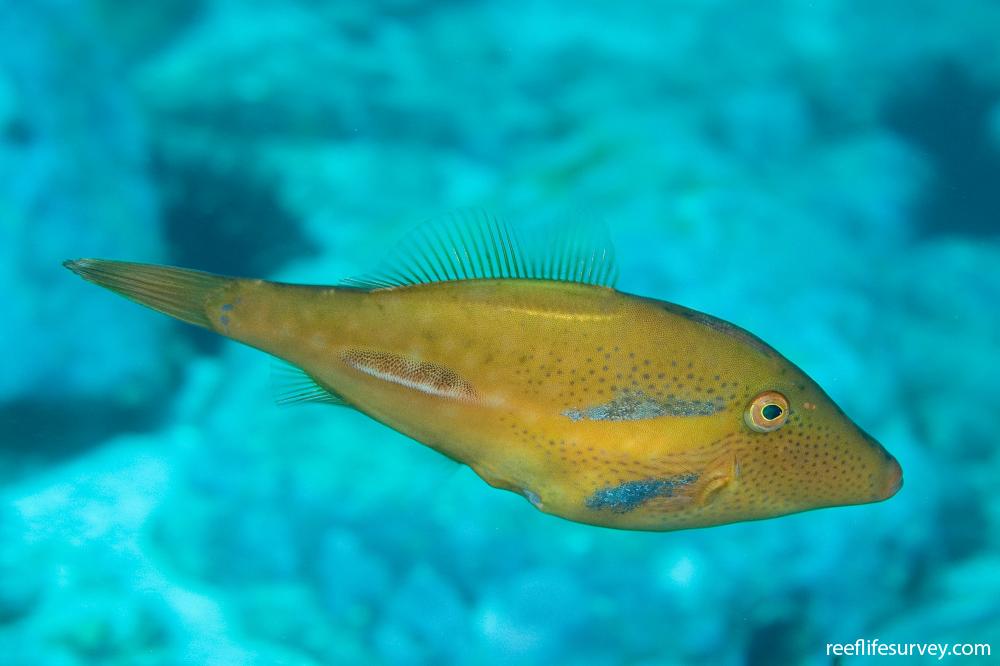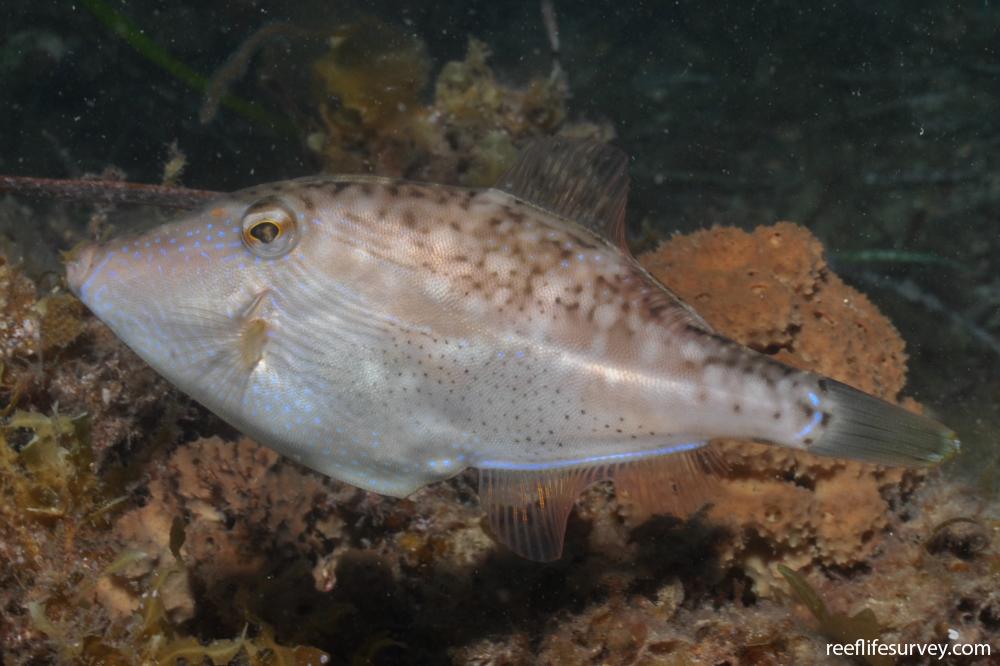Acanthaluteres vittiger
Toothbrush leatherjacketSimilar Species
Same Genus
Distribution
Temperate Australasia
Description
Males have a characteristic set of bristles on each side of the rear of the body. Females have a less distinctive appearance but can be recognised by the shape of the body, a light brown colour pattern, and a dorsal spine that fits completely into a groove when depressed.
Information
Max Size: 35 cm
Sea Temperature Range: 10.4-23.2°C
Depth: 0 - 40 m
Habitat Generalization Index: 5.49
Also referred to as the SGI (Species Generalisation Index), this describes the habitat niche breadth of the species. Species with values less than 15 are found in a relatively narrow range of reef habitat types (specialists), while those over 25 may be found on most hard substrates within their range (generalists). Learn more here.
Conservation and Rarity
IUCN Status: Not Evaluated
Occurrence: Common (41.5% of sites)
Occurrence describes how often the species is found on surveys within its distribution. It is calculated as the % of reef sites surveyed by RLS divers across all the ecoregions in which the species has been observed
Abundance: Several (6 per transect)
Abundance is calculated as the average number of individuals recorded per RLS transect, where present.
Edit by: extract from GJ Edgar. 2008. Australian Marine Life. New Holland, Sydney
























